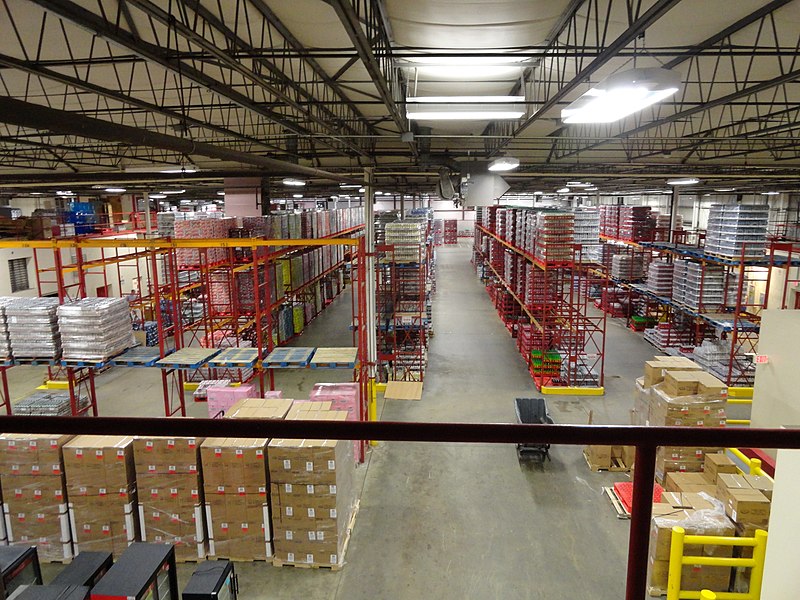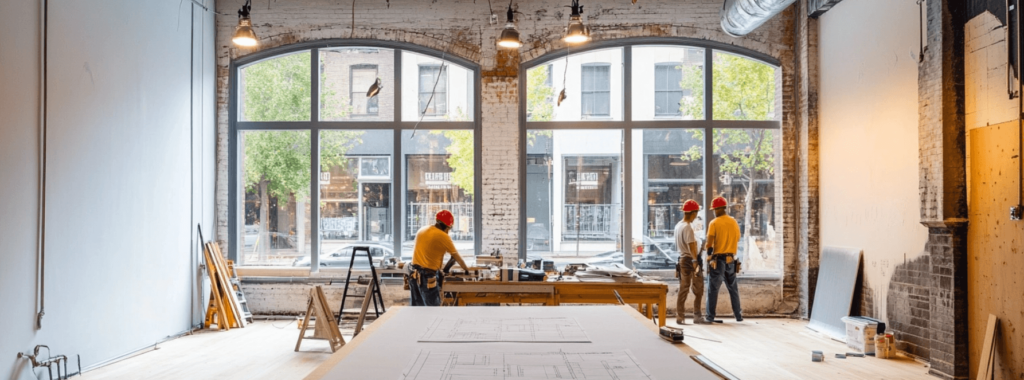As an entrepreneur, you know that it is not just the presence of assets that makes a difference to the success of your business. The key is making sure you utilize them effectively. Unfortunately, business owners aren’t always fully aware of how they can best leverage their commercial property’s value. It is not simply an item you have to allow to appreciate over the years and then sell.
Indeed, in many cases, this isn’t the most practical outcome. Sure, selling your property outright can release a significant amount of liquid capital for reinvestment. But then you’re left without a space from which to run your business. Really, this approach is only appropriate if you’re selling your company entirely or moving to a different location. An alternative option available to you, on the other hand, allows you to liquidate this asset while still being able to operate from it.
Let’s take a closer look at the concept of sale-leaseback. What does it involve and what do you need to know about it?
What is Sale-Leaseback?
A sale-leaseback is the process of selling a property to a buyer on the condition that you can continue occupying the property under a lease agreement.
It’s a relatively straightforward arrangement that holds benefits for everyone involved in the transaction. In most cases, this is an approach sought by business owners that need to liquidate some assets while still operating from the same location. From the buyer’s side, this arrangement is usually sought by investors that want to see immediate returns by minimizing the time and expense devoted to seeking tenants.

For example, imagine a manufacturing company that needs capital for expansion. They decide to sell their headquarters and immediately lease it back. This transaction provides the funds to invest in new product lines and hire additional staff without disrupting their operations. The long-term lease ensures they can stay in their familiar location while benefiting from the influx of cash.
In the majority of cases, the sale and the lease are two separate processes. The requirement to lease the property back to the original owner is not part of the contract of sale. Technically speaking, if the buyer received a more lucrative offer from a third party between the time of sale and the lease arrangement, they could certainly choose to go with them. However, this is a relatively rare situation, and it’s usually in the best interests of the buyer to lease the property to a business that is already fully installed in the property and receiving revenue from a solid consumer base. Assuming the buyer already has several other properties, it’s simply a matter of looking through their rent roll, or other documentation to see the advantage of leasing to the current tenant.
There are circumstances in which you as the property-owning business don’t necessarily need to sell your entire property. You may be able to retain the building and sell-leaseback adjacent land or buildings that you use for storage, parking, or warehousing. The extent of the sale can be subject to negotiations, particularly if you’re working with a property investor that specializes in a sale-leaseback portfolio.
What are the Advantages?
As the current owner of the property, there are various benefits you can enjoy from adopting a sale-leaseback approach.
These include:
- Access to liquid capital
Perhaps the most important benefit of sale-leaseback in commercial real estate is that it can free up your liquid capital. You can then apply this to new projects, expanding your business, and investing in equipment or staff that can give you a competitive edge. It can also reduce your reliance on external investors or funding providers who would otherwise require a percentage of profits or may influence your business in exchange for capital. In essence, it can help you to maintain not just your liquidity but also your independence.
- Reduction of debts
Few businesses own their properties outright. Particularly if you’re a small business owner, you’re more likely to have some form of mortgage on the property. In a sale-leaseback situation, you can benefit from a portion of extra capital while also paying off a significant debt that’s attached to your business. This in turn can shift the value of your company by changing your asset to debt ratio. As such, you may find a knock-on effect if you’re seeking to gain external investment.
- Maintaining occupation
You’ve likely put a lot of time and effort into building your business. Much of this will be located around the property you currently own. This could be in establishing solid relationships with local customers if you’re a retailer. It may be in the form of establishing a highly efficient layout and workflow if you own a warehouse. A sale-leaseback situation means you aren’t undoing the significant investment you’ve put into optimizing your business’ location. You still get to occupy the property for an agreed period of time.
- Tax benefits
In some circumstances, your business can gain tax benefits from a sale-leaseback arrangement. On one hand, you have shifted the status from owning the property to renting it. As such, you can usually deduct the cost of your rent from the taxes you pay to the Internal Revenue Service (IRS) each year. In addition, if the property has depreciated in value from the time of your purchase, you will be subject to fewer if any capital gains taxes you have to pay on the sale. Keep in mind that there are some unsavory characters out there that use sale-leaseback arrangements to avoid taxes, so make sure you heed the IRS guidelines around that.
What are the Disadvantages?
Naturally, alongside the advantages of a sale-leaseback, there are also certain downsides. It’s important to gain a full awareness of these before making any decisions.
The potential disadvantages of a sale-leaseback in commercial real estate include:
- Reduction of assets
There’s no getting around the fact that property is an extremely valuable asset to own. This is particularly the case if you no longer have a mortgage on the property and it’s located in an area with high-demand and low-inventory of real estate. In the right circumstances, your ownership of the land in a growth area can vastly raise the value of your company. Selling the property in exchange for a rental agreement means you no longer have this asset at your disposal, which can alter opportunities with potential investors or partners in the future.
- Sale during poor market conditions
In some instances, seeking a sale-leaseback arrangement is a necessity rather than an optimal choice. Your company may need to liquidate assets to pay off mounting debts or to take advantage of time-limited investment or growth opportunities. As such, you may find you’re having to sell the property at a time in which the local commercial real-estate market is at a low point. The result being that you get a reduced return on your investment than you might a few years down the line.
- Potentially higher rental rate
You may find that your need to sell to lease your property puts you in a disadvantaged position. While owning a property in a high-value market location is good for the amount of liquid capital you can generate, this might not be so positive for the amount of rent you have to pay. Indeed, this may be several times higher than the mortgage payments you are currently making on the property. It’s also important to bear in mind that if you are locked into a long-term lease at a fixed rental rate, you may wind up paying above value if the local market takes a downturn.
- Possibility of need to relocate
While you’re gaining a lease following the sale, this is still a finite situation. At the end of your lease period, the buyer may choose to either resell the property to a developer or rent to a different business. This means that you could be spending the next several years continuing to build and bolster your local profile only to find that you still have to relocate at a later date. It’s true that many landlords will have a preference for keeping a tenant for a significant period of time. But this doesn’t change the fact that by selling your property you are also taking on the risk of having to move if you’re unable to later repurchase the land.
Wrapping Up
A sale-leaseback in commercial real estate is a way for a business to sell their property while still occupying it. There are certainly significant benefits to this approach, particularly if your company owns the property outright or can gain from a better balance of assets to debts. However, I would recommend speaking to an attorney first so they can review your lease and help you understand how selling this asset can put you in a vulnerable position. While sale-leaseback can be an effective tool, it’s important to understand the full extent of the impact it can have on your company before making any decisions.



